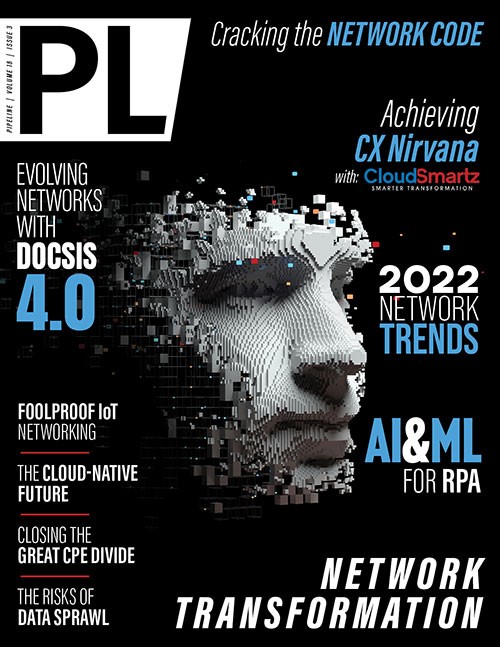AI, ML and the Next-Generation Network Reinvention
Once you have taken these steps, your new open architecture will allow systems to communicate freely with everything. This means you can leverage the concept of templating and using resource adapters for all vendor and manufacturer platforms, which speeds up the process of onboarding new equipment and improving customer service. You can leverage closed-loop automation to track and monitor every event in a customer's journey or on the network's journey. By following the entire lifecycle of events, you start to understand the decision trees and cumulative infrastructure effects in your environment and which ones you should be giving decision-making power to.
Shift the focus to customer experience
Customer experience centricity is a process we are currently busy with internally at Colt and are replacing all underlying monitoring and performance systems with solutions that have AI and ML at their core. Client experience is lost in a matter of microseconds in the service provider world. Our goal is to focus on delivering value to customers by improving their experience, which can only be achieved with a system that supports speed to resolution and in which workflows are optimized.
It’s important to remember that because modern networks are so incredibly complex, with layers of services built on multiple global platforms, your services will always need to run through multiple technology stacks over numerous geographies. However, with an open architecture shrink-wrapped with AI and ML, where we used to be able to rely on human intelligence to interrogate and understand dependencies, which is time-consuming, these technologies can now access your entire data universe and automatically understand the impact events have across all systems.
The role that AI and ML play in improving customer experience and automating workflows is immense, but again, you can't overlay these technologies on broken systems and processes. They also need data from multiple perspectives. Just like the human brain draws on five senses, AI and ML draw from your data to create a neural network, which, if it isn't fed the right data, will be ill-equipped to perform even routine decision-making.
For Colt, we have selected a future that is centered on the replacement of complex systems, redesigning our processes, and embracing an open architecture that frees us up to build on the digital experience, push automation and orchestration to its limits, and leverage AI and ML to automate our workflows. We believe that starting fresh allows us the flexibility needed when onboarding new processes and technologies, designing the organization around the system and leaving the unwieldy web of complexity behind.
Our goal going into this has never been cost reduction. We know we must invest money to achieve the results we need. We are doing it because by being more efficient, we will be able to achieve our goal of heightening customer experience.
A human-centered digital patchwork
As much as we are developing and nurturing the AI and ML brain, we need to remember how critical people are to this process. A technician has a view of your operations no machine will ever have, but with the help of machines, they can access, extrapolate, and expand on this view faster than they could without them. Machines only do what they're told to do, based on the data and perspectives they're fed. With AI and ML in place, your highly specialized people are free to focus on further automation, get the actual training they need, ensure end-to-end workflows operate optimally, and concentrate on problems that need solving.
Further, by freeing your resources to fine-tune their own skills, you now have a team of highly skilled technical engineers who can shift their focus to more complex issues at hand and can offer real value to customer support. With the automation taking care of the repetitive and predictable events, your people are also free to tap into their creativity and ingenuity. This allows them to work more closely with customers to get to the bottom of their pain points and build solutions that map to their unique business needs. Ultimately, your people can play an essential role in building value-centric solutions that elevate the customer experience you deliver.
In summary, when you have a new foundation that leverages AI and ML and embraces automated workflows, you can answer the question: what is the future of network monitoring and network automation? It is looking beyond just spinning up a product or service and instead looking to how you automate the entire network workflow—and doing all of this with speed and precision to resolution.



















